

Photograph Source: Wafa (Q2915969) in contract with a local company (APAimages) – CC BY-SA 3.0
The massacre of innocent people is a serious matter. It is not a thing to be easily forgotten. It is our duty to cherish their memory.
– Mahatma Gandhi
Introduction: Morality Divorced Politics
War breeds depravity and vague appeals to morality give way to a politics soaked in blood and destruction.[1] Too often it is the most innocent who pay the price. The most recent and tragic example is the death and violence that has been waged on the children of Israel and Gaza. According to the United Nations Office for the Coordination of Humanitarian Affairs, when violence first erupted on October 7th with Hamas’s brutal and heinous attack on Israeli soldiers and civilians, 29 Israeli children were killed.[2] The killing of innocent children continued in shockingly accelerated numbers with Israel’s policy of collective punishment. By November 26th, a staggering 5500 Palestinian children had been killed in Gaza, an additional 1800 are missing, and nine thousand were injured.[3] About half of Gaza’s 2.3 million people are children.
For the children killed in both Israel and Gaza, history did not begin on October 7th. History makes clear that the creation of graveyards for children has a long legacy and is deeply rooted in the language of war, militarism, forced detentions, occupation, blockades, and violence.[4] It is a language that pushes aside the rhetoric and value of human dignity, social responsibility, compassion for the other, and democracy itself. The killing of children in war is overlooked when human dignity succumbs to nationalistic passions and militarized machineries of violence.
Amid the current Israel-Hamas war, images of children covered in blood, limbs missing, bodies robbed of life are forgotten amidst the calls for security and revenge “created and maintained by planes and weapons of war.”[5] This is especially true for the children of Gaza. Under such circumstances, memory fails, and history no longer serves as a warning and moral witness to the depravity of sacrificing children to the cruelty of prioritizing war over peace. When history, ethics, and respect for human dignity disappear in the framing of violence, especially with regard to the killing of children, silence becomes both a form of betrayal and an accessory to ignorance and violence.[6] Whether by Hamas or Israel, And the killing and wounding of children will continue, and must be condemned.
As Martin Luther King Jr. stated in his famous 1967 Riverside Church speech condemning the Vietnam War, times of violence and war make it even more necessary to raise the question regarding who is going to speak for the children.[7]King’s moving words are as relevant today in the midst of the Israel-Hamas war as they were in 1967. For King, the burden of conscience, justice, and compassion demands a notion of social responsibility that enables one “to speak for the weak, the voiceless [and the] suffering and helpless outcast children.”[8]
Children are innocent. They do not create the conditions for war; nor do they wage war on others. The deaths of all children in this conflict are tragic and as Judith Butler has argued “There can be no inequality here.”[9] How might we understand the Israel-Hamas war at a time in history when massive machineries of death not only engage in the slaughter of children, but as David Theo Goldberg has argued, such actions are “predicated on accepting that there is some self-defending legitimacy to killing almost at random women, children and men” in order to provide security through bombs, tanks, planes, and indiscriminate killing of civilians.[10] Of course, inflated emphases on security and fear are not the only major legitimating arguments for war but are connected to Rebecca Gordon’s observation that “War may not be healthy for children and other living things, but it’s great for the arms industry.”[11]
How might history, morality and politics be theorized to provide a language for opposing the actions of the leadership of both Hamas and right-wing Israeli prime minister, Netanyahu. This is an especially crucial issue, especially regarding Netanyahu whose war policies get relentlessly legitimated in the ethically eviscerated vocabulary of authoritarian double-speak of “collateral damage,” “military necessity,” “self-defense,” “human shields,” and “forces of barbarism.” As Jason Stanely observes, the killing of civilians cannot be vindicated in the name of self-protection by either side in this war. What must be acknowledged is that Israel’s desire for revenge, coupled with its overwhelming powerful military advantage over Hamas, makes it unacceptable to justify the fact that it is engaging in the [disproportionate] mass killing of innocent civilians, largely children.”[12]
In these violent though greatly asymmetrical war machines waged by Hamas and the Israeli state, “justice equals injustice” and for children who are caught in this overwhelming assault by the Israeli Defense Forces, there is no world of play, justice, or joy. Instead, they live in a world in which there is only the intolerable reality of bloodletting, the destruction of hospitals and housing, and no life beyond militarized policies of revenge.[13] How else to explain two young children, one 15-year-old and another 8-year-old, being killed by Israeli forces in the occupied West Bank? It gets worse.
Surely, given that over 15,000 civilians are dead, many of them women and children, as a result of Netanyahu’s war of reprisal, it is reasonable to break the silence and ask whether the staggering amount of destruction and death in Gaza “add up to a reasonable response to the nightmare of Hamas’s October 7th attack.”[14] Judith Butler goes further and argues that targeting civilians, but especially children, amounts to what she calls a “genocidal set of policies.”[15] In making this claim, she defends the right to criticize the Israeli state by claiming it is “not antisemitic to criticize the state of Israel if the state of Israel is a settler colonial state that’s doing violence of an extraordinary kind. One objects to injustice. Indeed, as a Jew, you’re obligated to object to injustice. You would not be a good Jew if you were not objecting to injustice. To be in solidarity with Palestine is not necessarily to agree with all the military actions of Hamas, but it is to stand with the people who are being targeted in a genocidal manner.”[16]
The death-dealing zones of tranquilization both haunt and shape the mainstream media and other educational institutions regarding their coverage of the Israel-Hamas war. Militarism merged with power produces a suppression of history, dissent, and civic courage. Truth is sacrificed to propaganda and the workings of a massive disimagination machine that has no memory, ethics, sense of justice, or future. The reach of violence and death in Israel by Hamas is shocking in its depravity and has been well publicized in the mainstream media and in other cultural apparatuses. The same publicity is not afforded to the suffering experienced by the children and civilians in Gaza inflicted by the Israeli state, which gets too little coverage as the media reinforces a massive degree of historical and social amnesia.
Morality and politics appear to have negligible effects from those calling for peace on both sides of the conflict. Moreover, the fixation on morality with regard to the atrocities suffered by the Israeli civilians has a depoliticizing effect because it obscures “the massive power imbalance, which shapes the current crisis.”[17] The unacknowledged asymmetry of power, violence, and repression in the dominant media works to shut down a fruitful and truthful dialogue among Israelis and Palestinians regarding the history, roots, and evolving context of the war and a recognition of the long-standing suffering of the Palestinian people. Moreover, the often-one-sided emphasis on Israeli victims and hostages runs the risk of offering what Noura Erakat terms an “unquestioned support for Israeli militarism” and in doing so subordinates any talk of a possible political solution to a moral problem.[18]
Netanyahu’s eliminationist language is echoed in his claim that “I will never allow a Palestinian state….We will ensure Gaza never poses a threat again.” [19] This extremist rhetoric provides a glimpse into the far-political calculus driving the massive bombing of Gaza and the staggering levels of suffering it has caused. The Jewish historian, Seth Anziska notes in an essay in The New York Review of Books that there is more at work here than the sickening and visceral devastation caused by Israel’s military overreach. He writes:
The scholar Raz Segal has called the wrath currently being unleashed in Gaza a ‘textbook case of genocide, while the historian Omer Bartov has warned that ‘the danger of genocide is right there’—shocking turns of phrase for all of us who made sense of that term through the experience of European Jewry in the twentieth century. But Palestinian and Arab writers have long warned against the current attempt to eviscerate the Palestinian people, as have prophetic critics within the Jewish tradition and dissenting voices inside Israel itself. By disavowing the moral consequences of state power and sovereignty, Israel’s leaders and many within Israeli society—as well as staunch supporters abroad—refuse to admit that they can be both victims and perpetrators.[20]
The long-standing grip of colonial rule on the part of Israel points to the need to get beyond morality to examine and resist the politics, power relations, and conditions that led to the current conflict. In this case, there is a need to get beyond the language of moral condemnation, which overrides what it might mean to both provide security for Israelis and liberation and freedom for Palestinians.[21] James Baldwin insightfully stated that political freedom in the end is more about power than morality; it is about power in the service of collective resistance. Following Frederick Douglass’ admonition that “power concedes nothing without a demand,” he argued that “For power truly to feel itself menaced, it must somehow sense itself in the presence of another power — or, more accurately, an energy — which it has not known how to define and therefore does not really know how to control.” [22] This is the power of critical thought, provocation, and resistance.
History and Context
The Israel-Hamas war has seen the weaponization of education as part of a massive tool of propaganda and erasure. Any call for analyzing both the history and evolving context of Israeli-Palestinian relations is largely dismissed by many Western states, right-wing politicians, contemporary media, social media, and educational institutions as either a form of antisemitism or an apology for Hamas’s atrocious acts of violence. Even more egregious is the claim that Hamas and the Palestinian people are synonymous. In this instance, Israel uses Hamas’s terrorist crimes to punish all Palestinians. As Fintan O’Toole argues in the New York Review of Books:
This long-established logic continues to play out in Israel now. Those who commit terrorist crimes are identified (as they wish to be) with the people they claim to represent. That people is then reduced to the atrocities committed in its name and must pay the price for these outrages. It is a logic that simultaneously inflates the standing of the terrorists and shrinks almost to invisibility the individuality of the civilians who belong to the criminalized group. It is a logic that has been used, time and again throughout history.[23]
Central to the claim that Hamas’s actions offer the only narrative for understanding the Israel-Hamas war is a one-sided condemnation that “requires a refusal to understand…and undermine[s] [the] capacity to judge.”[24] As Nicholas J. Davies observes, “Missing from this view has been a recognition of any of the history that led to it.”[25] This reductionist narrative too easily provides a wholesale justification for Israeli violence against children, women, and civilians. It is crucial for any analysis of the current Israel-Hamas conflict to be situated and addressed through the history and root causes that have shaped it; otherwise, the search for peace is annihilated in the militarized calls for war. For example, Tal Schneider reported in the Times of Israel that any condemnation of Hamas would be incomplete without engaging the history of how Netanyahu “took an approach that divided power between the Gaza Strip and West Bank—Bringing Palestinian Authority Mahmoud Abbas to his knees while making moves that propped up the Hamas terror group.”[26] In other words, Netanyahu played a decisive role in bringing Hamas to power and making sure that they remained in control of Gaza.
It is not enough to exclusively condemn Hamas’s atrocious violence as a violation of human rights. Turning a critical eye on the violence waged by Israel on Gaza is crucial, especially at a time when such violence may be in violation of international law, especially since October 7. For example, Israel’s bombing operations in Gaza included air strikes against the Jabalia refugee camp, which the U.K.-based watchdog Airwars claimed resulted “in the death of multiple family members, three of which reportedly involved entire families being wiped out. The estimated civilian death toll [of] 126-136, include[d] 69 children.”[27] In addition, and as Brett Wilkins reports “as many as 1.7 million people—or about 70% of Gaza’s population—have been forcibly displaced in a war that numerous experts have called “genocidal.”[28]
Equating all Palestinians with Hamas is a formula for the globalization of Islamophobia and hate. At the same time, a similar reductionism works for equating Netanyahu’s brutalizing domestic and foreign policies with all Jews collectively. The latter notion of collective blame feeds antisemitism. What is missing in both accounts are the complex ways in which the horrors of war are embraced by a variety of right-wing states, groups and individuals and what they share in their support of Netanyahu’s policy of collective punishment. Put simply, all Jews cannot be held responsible for Netanyahu’s destruction of Gaza and Palestinians cannot be “held collectively and individually responsible for the actions of Hamas.”[29]
Refusing to hold all sides in this war to the standards of international law is a violation of human dignity, justice, and democratic principles. As theorists such as Adam Tooze, Samuel Moyn, Amia Srinivasan, and Nancy Fraser have argued, there is little discussion of violations of international law in the current discourse. Atrocities against civilians and children on both sides must be condemned under the principles of international law. When they are not, the killing of children no longer becomes unthinkable, it becomes an atrocity that remains unaccountable. Tooze Mony, Fraser, et. al. are worth quoting. They write:
We are concerned that there is no mention of upholding international law, which also prohibits war crimes and crimes against humanity such as collective punishment, persecution, and the destruction of civilian infrastructure including schools, hospitals and places of worship. Being guided by principles of international legal standards, solidarity and human dignity compels us to hold all participants in the conflict to this higher standard. We cannot allow the atrocities to force us to abandon these principles.
Israel has engaged in the saturated bombing of one of the most densely populated areas on the earth; it has bombed hospitals, killed journalists, cut off water, electricity and food crucial to the survival of 2.3 million Palestinians, reproducing what many international agencies and commentators have referred to as an “open grave.” [30] In the midst of the present assault by the Israeli military, “the Secretary-General of the U.N., António Guterres, emphasized that Gaza was becoming a “graveyard for children.”[31] The violence that is being waged against Gaza has a long history and apprehending that history is crucial to any viable understanding of the moral use of power and its relationship to the principles of justice and freedom. Unlimited destruction, suffering and murderous rage are at the roots of the Israel-Hamas war and are rooted in a history that must be addressed if the question of peace and freedom are to replace the death-dealing practices of war. Judith Butler is right in arguing that one’s moral position on the war should not be threatened by learning about history. She writes:
It need not threaten our moral positions to take some time to learn about the history of colonial violence and to examine the language, narratives and frameworks now operating to report and explain – and interpret in advance – what is happening in this region. That kind of knowledge is critical, but not for the purposes of rationalising existing violence or authorising further violence. Its aim is to furnish a truer understanding of the situation than an uncontested framing of the present alone can provide.[32]
Demonizing Language and the Suppression of Dissent
Any talk about peace between Jews and Palestinians and what it means to prevent the tragic killing of children and civilians has to address how language has been used in this conflict to utterly demonize Palestinians and those Jewish groups and individuals who speak out for ending the war and for Palestinian freedom. Much of the contemporary media has either reported or given airtime to a language of dehumanization, which feeds the far-right’s pathological hunger for revenge, war, and violence. For instance, in response to the horrifying attack by Hamas on October 7, Israel’s defense minister, Yoav Gallant stated that “‘we are fighting against human animals and we will act accordingly’.”[33] The Israeli politician Moshe Feiglin called for a Dresden on Gaza, referring to the World War II firebombing of the German city of Dresden, killing some 25,000 people. When asked about the killing of Palestinian civilians, “the former Israeli prime minister Naftali Bennett said to a reporter on Sky News. ‘What is wrong with you? We’re fighting Nazis.’”[34]Prime Minister Benjamin Netanyahu repeatedly uses the language of demonization, evident in his claim that “Hamas are the new Nazis” and that the war against them represented “a battle of civilization against barbarism.”[35] These comments are not simply moral and intellectual failings on the part of political leaders, they use this absolutist language to portray anyone who criticizes the Israeli state as hardened anti-Semites, if not terrorist collaborators.
Since the attack by Hamas, the language of extermination and disposability has reached a fever pitch. In Israel, much of it is aired by hardline, right-wing extremists in Netanyahu’s circle of support. Ishaan Tharoor, a writer for The Washington Post, provides a startling example of this discourse of dehumanization, violence, and ethnic cleansing. He writes:
Consider the remarks of far-right National Security Minister Itamar Ben Gvir, who, while inciting new rounds of violence in the West Bank, also suggested anyone who sympathizes with Hamas should be “eliminated.” Or those of Amihai Eliyahu, a far-right coalition partner of Netanyahu and Israel’s heritage minister, who said dropping a nuclear bomb on Gaza could be an option. Or the call from Galit Distel Atbaryan, recently (but no longer) Israel’s information minister, to erase “all of Gaza from the face of the earth” and drive its Palestinians into exile in Egypt.[36]
The language of dehumanization whether it comes from Israelis or Hamas is profoundly disturbing. Hamas followers calling all Israeli’s neo-Nazis shred human dignity and politics in the discourse of unbounded hate. What is crucial to address is that power in this conflict is on the side of the right-wing Israeli state whose propaganda machine and discourse of dehumanization dominates global politics in the United States and many of the Western nations. As a number of Holocaust scholars noted in The New York Review of Books, such rhetoric promotes “racist narratives about Palestinians…separate[s] this current crisis from the context out of which it has arisen [and erases] seventy-five years of displacement, fifty-six years of occupation, and sixteen years of the Gaza blockade.”[37] In the end, the language of demonization and absolutes, further generates “an ever-deteriorating spiral of violence [and a] narrative in which an “evil” must be vanquished by force will only perpetuate an oppressive state of affairs that has already lasted far too long.”[38] Not only does such language, no matter the source, make violence the organizing principle of communication, but also elevates war as the only solution to the 70-year-old Israeli-Palestinian conflict.
For instance, the high degree of pro-Israeli propaganda and disinformation is a powerful force in portraying Palestinians as less than human, unworthy of human dignity, and subject to a racist framing that recapitulates a colonial logic. Evidence abounds at how this discourse exists in Israel at the highest levels of power. For instance, an Israeli government minister, Bezalel Smotrich (who calls himself a proud homophobe) referred to Palestinians as mosquitoes, amplifying his derogatory remark with the comment “That is the problem with mosquitoes. If you swat mosquitoes and hit maybe 99, it will be the 100th one, which you didn’t swat, which will kill you. The genuine solution is to dry out the swamp.”[39] Victor Grossman points out that “When asked if that could mean eradicating whole families with women and children, Smotrich replied: ‘War is war.’”[40]
The language of dehumanization becomes both a cover for the brutal treatment of Palestinians while offering an easy escape from the task of learning from history, providing a comprehensive context for understanding the conditions that led to the war, and courageously engaging the struggle for peace. Moreover, such a language is not limited to right-wing extremists, it also has the power to shape popular culture, engulfing the minds of a generation of young people with hateful racist stereotypes. In this instance, popular culture further normalizes the policy of collective punishment and collective rage for which there are no limits, regardless of the suffering inflicted. How else to explain, as the war was unfolding, an incident in which a video appeared on Israeli state TV channel Kan News in which children sang: “Within a year we will eliminate everyone…. In another year there will be nothing there. And we will safely return to our homes…The IDF crosses the border to eliminate the bearers of the swastika…We’ll wipe them all out…We’ll show the world how we destroy our enemies.”[41] Indoctrination fueled by the rhetoric of dehumanization produces a politics of disposability in which, in this case, Palestinian lives are viewed as worthless, excess, and worthy of destruction. It also reinforces and accelerates the suppression of critics calling, in the face of Israel’s staggering onslaught against Gaza, for either peace or a cease-fire.[42]
Militarized McCarthyism
Speaking for the suffering, oppressed, helpless, and innocent children who are under attack and brutally killed in this war has become increasingly dangerous. Individuals and groups both in Israel and abroad who either oppose Netanyahu’s policies of Palestinian dispossession, and brutal ground and air assaults, or who call for a cease-fire, are subject to a widespread campaign of harassment, censorship, and arrests. Marsha Gessen writing in The New Yorker states that people are being arrested in Israel on charges of inciting terrorism for posts calling for a cease fire. She claims that opposition to the war is met with a “crackdown on speech, which involves arrests, police interrogations, and so-called warning talks conducted by the Shabak, the security services.”[43] Israel has passed repressive legislation that enables and legitimates expansive use of surveillance, censorship, and arrests of opposition voices, especially Palestinian Jerusalemites, though capable of being used against all dissenters in Israel. Writing in +972 Magazine, Sophia Goodfriend reveals the draconian nature of the law. She writes:
On Nov. 8, the Knesset passed an amendment to the Counterterrorism Law, introducing a new criminal offense — “consumption of terrorist materials” — that carries a maximum penalty of one year in prison. Its proponents promise that the measure will combat “brainwashing that may produce a desire or motive to commit terror,” but human rights advocates and legal experts are describing it as a bid to “penalize thoughts and feelings” and one of the most intrusive and draconian measures ever passed by the Israeli parliament. The Association for Civil Rights in Israel (ACRI) warned that the legislation has no precedent in any democracy elsewhere in the world.[44]
In the United States, attempts to suppress opposition and criticism of the war have been fast and furious.[45] Under the inflated and indiscriminate charge of a hardened antisemitism, there has been a widespread campaign among universities, workplaces, and in social media to silence dissenters who call for a cease-fire or defend Palestinians’ rights.[46] Some universities, including Brandeis and Columbia, have taken steps to suppress protests against Israel, and have abolished student organizations such as –Students for Justice in Palestine chapters. Ron DeSantis, the right-wing extremist governor of Florida “directed schools to disband campus chapters of a pro-Palestinian student group he alleges are aligned in support of terrorists.”[47] In other cases of outright repression, academics have been fired or face punitive measures for protesting for Palestinian freedom. In addition, journalists and academics alike have argued that the reach of the Israeli lobby and public relations institutions is so powerful that it has been instrumental in getting major conferences canceled, publications and media interviews pulled, [and that] support for Palestine has invited a distributed, stochastic reprisal, severe to the point that it can, without exaggeration, be compared to a ‘McCarthyite backlash’.”[48] Doxing, censorship, intimidation, and the criminalizing of dissent have gained enormous power in drowning out the call for justice and Palestinian freedom.
This intense wave of repression is also driven by the influence of powerful right-wing billionaires who head prestigious law firms, rescinding job offers to law students who signed petitions advocating for Palestinian rights. One case that attained national attention focused on Ryna Workman a student at NYU who lost her job offer at a prestigious law form because of her opposition to the war.[49] The rich and powerful have also used their control over media outlets such as Facebook, Instagram, and X to censor pro-Palestinian narratives. They have also threatened to rescind their donations to universities that have allowed dissent to the war to take place on their campuses. The billionaire class supporting Netanyahu’s militarism has also fired writers and editors who opposed Israel’s assault on Gaza. This also includes David Velasco, the editor-in-chief of Artforum, who was fired by Jay Penske, the CEO of Penske Media Corporation, for printing a letter in which he opposed Israel’s scorched earth war policy.[50]
Netanyahu’s war culture thrives in the U.S. and among many Western nations in repressing dissent. Central to a militarized culture is the squashing of oppositional voices in order to produce a carefully managed ignorance. Under such circumstances, wars waged in the name of security, revenge, and hatred take on the overtones of a religious crusade. Culture industries, educational institutions and other cultural apparatuses such as mainstream social media are politically driven by their billionaire owners and patrons to create the political, educational, and cultural foundations for not only suppressing dissent but undermining the fundamental rights crucial to any viable democracy.
Conclusion
Children have become both the pawns and innocent victims in the Israel-Hamas war and symbols of needless suffering, death, and collapse of ethics when war and its machineries of violence dominate politics. Hamas killed twenty-nine children on October 7, 2023. As a result of Israeli airstrikes and bombing raids more than 5500 Palestinian children have been killed since the start of the war. According to the United Nations, 1.7 million of the 2.3 million residents in Gaza have been displaced, many of them children.[51] As the Holocaust historian Omer Bartov notes, both “sides in this war have focused on the deaths and kidnapping of children sharing images and videos of the children as a testament to the other side’s cruelty.”[52] However, it must be noted that the Israeli state has killed a much larger number of children than Hamas.
What connects both Hamas and Israel is that the violence done against children is used simply as a prop to legitimate and continue the war and the ongoing death and suffering of children, women, and civilians. Children have become not only victims in this war, but they have also been weaponized to fuel calls for revenge, retribution, and violence, on both sides of the conflict.
Surely the role of universities should be subversive in a world plagued by the growing tyranny of authoritarianism. What should be the role of academics, intellectuals, artists, educators, and other progressives in a time of war fed by rampant Islamophobia, antisemitism, and mass violence? The Israel-Hamas war is rooted in a history of colonialism, racist stereotypes, and a culture of fear, and is situated in a larger embrace of the madness of militarism. The language, politics and toxic racism that informs this war must be revealed through its history, and the efforts on the part of authoritarian governments such as the Israeli state to shut down the power of critical analysis in pursuit of social justice must be resisted.
Institutions that shut down the protective spaces where dialogue, debate, and informed exchange can take place, for instance, among Jews and Muslims must be challenged. Ethics must be put back into politics in order to recognize and condemn the killing and maiming of innocent children and civilians. Policies that deprive people of their land, sanction discourses of extermination, legislate the language of collective guilt, and demonize an entire people must be opposed in all public and educational spaces in which the values of free speech and democracy can flourish as well as through the growth of grassroots movements calling for peace, equality and freedom.
Academics and others must raise the question with their students and the larger public of what peace, true equality and freedom would look like in the region. Judith Butler provides an important insight in addressing these questions. She is worth quoting at length:
I deplore the violence unequivocally at the same time as I, like so many others, want to be part of imagining and struggling for true equality and justice in the region, the kind that would compel groups like Hamas to disappear, the occupation to end, and new forms of political freedom and justice to flourish. Without equality and justice, without an end to the state violence conducted by a state, Israel, that was itself founded in violence, no future can be imagined, no future of true peace – not, that is, ‘peace’ as a euphemism for normalization, which means keeping structures of inequality, rightlessness and racism in place. But such a future cannot come about without remaining free to name, describe and oppose all the violence, including Israeli state violence in all its forms, and to do so without fear of censorship, criminalisation, or of being maliciously accused of antisemitism…. For this, we need our poets and our dreamers, the untamed fools, the kind who know how to organize.[53]
The erasure of history, the ongoing repression of dissent, the collapse of morality, and the embrace of war and militarism as the governing principles of state politics have removed the Palestinian people from the discourse of solidarity and human dignity. Under such circumstances, the long-term suffering of the Palestinian people is erased, demeaned, or misrepresented. With the omission of key historical contexts, the Israel-Hamas war gets presented through vast propaganda apparatuses that call for revenge, collective punishment, militarism, and war. The repression of dissent regarding Palestinian freedom is not innocent; it maligns human dignity, weakens the demands of conscience, and strips democracy of any value. It also works to prevent uncomfortable questions about the role of the Israeli state, settler violence, and the killing of children. Adam Shatz raises one of the more discerning questions regarding the contradiction that undermines Israel’s claim to democracy. He writes, “In the words of Amira Hass, an Israeli journalist who spent many years reporting from Gaza, ‘Gaza embodies the central contradiction of the state of Israel – democracy for some, dispossession for others; it is our exposed nerve. Israelis don’t say ‘go to hell,’ they say, ‘go to Gaza.’”[54]
The Israel-Hamas war is a dreadful example of a militarized colonial past resurrecting itself in the language of violence and expulsion and threatens humanity with the prospect of perpetual war, one that has the potential to spread like wildfire across the Middle East. What this past suggests is that as welcome as a cease-fire is, it is not enough. Israel cannot wipe out Palestinian resistance and their call to freedom; nor can Palestinians eliminate the state of Israel. Adam Shatz is correct in arguing that Israeli Jews and Palestinian Arabs are stuck with each other, and that the only political solution is one “that recognizes both as equal citizens, and allows them to live in peace and freedom, whether in a single democratic state, two states, or a federation. So long as this solution is avoided, a continuing degradation, and an even greater catastrophe, are all but guaranteed.”
We live in a time to echo the words of Martin Luther King, Jr. when “silence is betrayal.” Against such silence, he argued that there is a need for a revolution of values, a rejection of the interlocking forces of “racism, extreme materialism and militarism.”[55] King was clear that there is no democracy without genuinely opposing critical power. Speaking out in a time of tyranny is the foundation for challenging the underlying forces that give momentum, life, and breath to killing machines and the states that embrace them. We have no other choice but to raise consciousness in order to act against tyranny in the name of social responsibility, human dignity, and justice. Michelle Alexander is right in stating that we must speak out in the name of the oppressed. She writes:
We must speak. When the oppressed, the poor, the weak are under attack, when their homes are stolen or demolished, when they are forced to migrate and to live in unspeakable conditions, in open-air prisons, and concentration camps, perpetually as refugees under occupation, we must speak. We must speak when Jewish children are brutally killed in the name of liberation, when antisemitism and Islamophobia slip in through the back door of supposedly progressive spaces. When Palestinian children in refugee camps are bombed and killed, when schools and hospitals and entire neighborhoods are laid waste, we must speak. When international law is treated like a naive suggestion, we must speak. Yes, it may be difficult. Yes, we will make mistakes. We are human. And yes, we may be afraid. But we must speak. Countless lives and the liberation of all of us depend on us breaking our silences.[56]
Higher education may be one of the few sites left where important issues can be analyzed, engaged, and subject to the rigors of history, a comprehensive analysis, and relevant evidence. It should be a place where students are given the knowledge to make informed judgments, deal with unsettling knowledge, and engage in pedagogical practices in which the search for truth is matched by a sense of ethical and social responsibility. Put simply, it should be a place where the habits of citizenship and critical agency should be allowed to bloom. As pointed out in a letter signed by 150 University of California professors, education in a time of crisis should reject attempts at censorship and refuse to run away from topics that are controversial, especially in a moment of crisis, war, and mass suffering. Instead of refusing to address such topics in the classroom, they called upon educators to be engaged intellectuals who provide the best elements of critical pedagogy. They write:
As historians, we maintain that among our contributions to a democratic society and a more peaceful world is to teach students the skills to evaluate different points of view based on evidence, rigorous inquiry, best pedagogical practices, and peer-reviewed scholarship free from external interference and political pressure. Indeed, this is the very foundation of our collective craft and a core principle of academic freedom.[57]
If we remain silent in the face of this war and refuse to act individually and collectively to bring it to an end, more children will die, and the bombs and violence that define the politics of right-wing racists, antisemites, and Islamophobes will prevail. Before long, the scourge and darkness of authoritarian politics will drown out whatever hope lies in the promise of a strong democracy and the calls for peace. The morally reprehensible killing of children in Israel and Gaza is part of a larger problem that haunts the modern period: the merging of colonialism and neoliberal capitalism. Regardless of the diverse forms it takes in various parts of the world, it is a dehumanizing politics of greed, disposability, and extermination. Its allegiance is not to human dignity but to the rewards of militarism, war, state violence, dispossession, and the repression of dissent and broader struggles for economic and social justice. Pressing the claims for such forms justice is no longer simply a political objective; it is a necessity at a time in which democracy across the globe is struggling to survive.
Notes.
[1] Chris Hedges, The Greatest Evil is War (New York: Seven Stories Press, 2022).
[2] Saranac Hale Spencer, “Dozens of Children Died in Hamas’ Oct. 7 Attack on Israel, Contrary to Online Claim,” Factcheck.org (November 16, 2023). Online: https://www.factcheck.org/2023/11/dozens-of-children-died-in-hamas-oct-7-attack-on-israel-contrary-to-online-claim/
[3] Mohammed Haddad, “World Children’s Day tragedy: Gaza 5,500 lives lost to Israel’s attacks,” Aljazeera(November 20, 2023). Online:
https://www.aljazeera.com/news/2023/11/20/world-childrens-day-tragedy-gazas-5500-lives-lost-to-israels-attacks
[4] On the history of the Israeli-Palestinian conflict and what has been done to Gaza, see Chris Hedges, “‘No Sanctuary’: Israel’s Long War on Gaza Scheer Post,” (October 21, 2023). Online: https://scheerpost.com/2023/10/21/the-chris-hedges-report-no-sanctuary-israels-long-war-on-gaza/; see also, Norman G. Finkelstein, Gaza: An Inquest Into It’s Martyrdom (Oakland: University of California Press, 2018).
[5] Fintan O’Toole, “No Endgame in Gaza.” The New York Review [October 31, 2023]. Online: https://www.nybooks.com/online/2023/10/31/no-endgame-in-gaza
[6] Linda Dayan and Maya Lecker, “How Haaretz Is Counting Israel’s Dead From the October 7 Hamas Attack,” Haaretz (November 23, 2023). Online: https://www.haaretz.com/israel-news/2023-11-23/ty-article-magazine/.premium/how-haaretz-is-counting-israels-dead-from-the-october-7-hamas-attack/0000018b-d42c-d423-affb-f7afe1a70000?lts=1701031597083
[7] Rev. Martin Luther King, Jr. “Beyond Vietnam: A time to Break Silence,” American Rhetoric (Delivered April 4, 1967). Online: https://www.americanrhetoric.com/speeches/mlkatimetobreaksilence.htm
[8] Rev. Martin Luther King, Jr. “Beyond Vietnam: A time to Break Silence,” American Rhetoric (Delivered April 4, 1967). Online: https://www.americanrhetoric.com/speeches/mlkatimetobreaksilence.htm
[9] Judith Butler, The Radical Equality of Lives,” Boston Review (January 2020). https://www.bostonreview.net/articles/brandon-m-terry-butler-int/
[10] David Theo Goldberg, “In our collective name,” Truthout (July 15,2014). Online: https://truthout.org/articles/in-our-collective-name/
[11] Rebecca Gordon, “Is it Time (Once Again) for Nonviolent Rebellion? On ending dreams of revenge in Israel, Palestine, and elsewhere,” TomDispatch (November 28, 2023). Online: https://mailchi.mp/tomdispatch/tomgram-rebecca-gordon-the-hamster-wheel-of-war?e=5101a5c41c
[12] Jason Stanley, “My life has been defined by genocide of Jewish people. I look on Gaza with concern.” The Guardian [November 11, 2023]. Online: https://www.theguardian.com/commentisfree/2023/nov/11/my-life-has-been-defined-by-genocide-of-jewish-people-i-look-on-gaza-with-concern
[13] Fintan O’Toole, “No Endgame in Gaza.” The New York Review [October 31, 2023]. Online: https://www.nybooks.com/online/2023/10/31/no-endgame-in-gaza
[14] Thom Hartmann, “Rebecca Gordon, the Hamster Wheel of War,” TomDispatch (November 28, 2023). Online: https://mailchi.mp/tomdispatch/tomgram-rebecca-gordon-the-hamster-wheel-of-war?e=5101a5c41c
[15] Amy Goodman, “Palestinian Lives Matter Too: Jewish Scholar Judith Butler Condemns Israel’s “Genocide” in Gaza.” Democracy Now [October 26, 2023]. Online: https://www.democracynow.org/2023/10/26/judith_butler_ceasefire_gaza_israel
[16] Amy Goodman “Judith Butler on Hamas, Israel’s Collective Punishment of Gaza & Why Biden Must Push for Ceasefire.” Democracy Now [October 26, 2023]. Online: https://www.democracynow.org/2023/10/26/judith_butler_on_hamas_israels_collective
[17] Deborah Chasman and Noura Erakat, “The Crimes Are Plenty” Boston Review [October 13, 2023]. Online: https://www.bostonreview.net/articles/the-crimes-are-plenty/.
[18] Deborah Chasman and Noura Erakat, “The Crimes Are Plenty” Boston Review [October 13, 2023]. Online: https://www.bostonreview.net/articles/the-crimes-are-plenty/
[19] Cited in Alon Pinkas, “Israel-Gaza War Enters a New Phase: Saving Private Netanyahu,” Haaretz (November 23, 2023). Online: https://www.haaretz.com/israel-news/2023-11-30/ty-article/.premium/how-do-you-gaslight-an-entire-nation-ask-netanyahu/0000018c-1f93-db78-adcc-bfffdcbf0000
[20] Seth Anziska, “Let Us Not Hurry to Our Doom,” The New York Review of Books, (November 9, 2023). Online: https://www.nybooks.com/online/2023/11/09/let-us-not-hurry-to-our-doom-israel-gaza/
[21] Ibid. Deborah Chasman and Noura Erakat.
[22] Cited in Blair McClendon, “To James Baldwin, the Struggle for Black Liberation Was a Struggle for Democracy,” Jacobin, [06.19.2021]
Online: https://www.jacobinmag.com/2021/06/james-baldwin-civil-rights-struggle-democracy
[23] Fintan O’Toole, “The Many and the Few.” The New York Review [October 21, 2023]. Online: https://www.nybooks.com/online/2023/10/21/the-many-and-the-few-israel-gaza/
[24] Judith Butler, “The Compass of Mourning.” London Review of Books [October 19, 2023]. Online:https://www.lrb.co.uk/the-paper/v45/n20/judith-butler/the-compass-of-mourning
[25] Nicolas J.S. Davies, “Israeli War Crimes and Propaganda Follow US Blueprint.” Counter Punch [November 16, 2023]. Online: https://www.counterpunch.org/2023/11/16/israeli-war-crimes-and-propaganda-follow-us-blueprint/
[26] Tal Schneider, “For years, Netanyahu propped up Hamas. Now it’s blown up in our faces,” Times of Israel(October 8, 2023). Online: https://www.timesofisrael.com/for-years-netanyahu-propped-up-hamas-now-its-blown-up-in-our-faces/; Adam Raz, “A Brief History of the Netanyahu-Hamas Alliance,” Haaretz (October 20, 2023). Online: https://www.haaretz.com/israel-news/2023-10-20/ty-article-opinion/.premium/a-brief-history-of-the-netanyahu-hamas-alliance/0000018b-47d9-d242-abef-57ff1be90000
[27] Jessica Corbett, “Probe Shows 126+ Civilians Killed by Israeli Airstrike Targeting ‘Just One Guy’.” Common Dreams [November 16, 2023]. Online: https://www.commondreams.org/news/israel-bomb-refugee-camp-
[28] Brett Wikins, “Intensified Israeli Airstrikes Push Gaza Death Toll Over 13,000,” CommonDreams (November 19, 2023). Online: https://www.commondreams.org/news/jabalia-
[29] Rowan Wolf, Editor’s Note,” Uncommon Thought (November 28, 2023). Online: https://www.uncommonthought.com/mtblog/archives/2023/11/28/authoritarianism-anti-jewish-racism-and-the-israel-hamas-war-an-open-letter-to-the-left.php
[30] Adam Shatz, “Vengeful Pathologies.” London Review of Books [October 19, 2023]. Online: https://www.lrb.co.uk/the-paper/v45/n21/adam-shatz/vengeful-pathologies
[31] Steve Coll, “Hostage-Taking and the Use of Children and the Vulnerable in War.” The New Yorker [November 15, 2023]. Online: https://www.newyorker.com/news/daily-comment/hostage-taking-and-the-use-of-children-and-the-vulnerable-in-war
[32] Ibid. Judith Butler, “The Compass of Mourning.”
[33] Cited in Fintan O’Toole, “Eyeless in Gaza.” The New York Review [October 10, 2023]. Online: https://www.nybooks.com/online/2023/10/10/eyeless-in-gaza/
[34] Adam Shatz, “Vengeful Pathologies.” London Review of Books [October 19, 2023]. Online: https://www.lrb.co.uk/the-paper/v45/n21/adam-shatz/vengeful-pathologies
[35] Lazar Berman, Netanyahu to Dutch leader: This war is civilization vs. barbarism,” The Times of Israel (October 23, 2023). Online: https://www.timesofisrael.com/liveblog_entry/netanyahu-to-dutch-leader-this-war-is-civilization-vs-barbarism/
[36] Ishaan Tharoor, “The Israeli right hopes not just for victory in Gaza, but also conquest.” The Washington Post[November 17, 2023]. Online: https://www.washingtonpost.com/world/2023/11/17/israel-government-right-gaza-endgame-conquest/
[37] Omer Bartov, Christopher R. Browning, Jane Caplan, Deborah Dwork, Michael Rothberg, et al., “An Open Letter on the Misuse of Holocaust Memory,” The New York Review of Books (November 20, 2023). Online: https://www.nybooks.com/online/2023/11/20/an-open-letter-on-the-misuse-of-holocaust-memory/
[38] Ibid.
[39] Victor Grossman’ “Gaza and the World,” Berlin Bulletin No 216 (November 3, 2023). Online: https://victorgrossmansberlinbulletin.wordpress.com/2023/11/01/gaza-and-the-world/
[40] Ibid. Grossman.
[41] See Sophia Khatsenkova, “Fact-check: Did Israeli children really sing about ‘annihilating everyone in Gaza’?” Euronews (November 27, 2023). Online: https://www.euronews.com/my-europe/2023/11/27/fact-check-did-israeli-children-really-sing-about-annihilating-everyone-in-gaza
[42] See, for instance, Radhika Sainath, “The Free Speech Exception.” Boston Review [October 30, 2023]. Online: https://www.bostonreview.net/articles/the-free-speech-exception/;Tyler Walicek, “Advocacy for Palestinians Has Been Outright Criminalized, Warns Academic.” Truthout [November 2, 2023]. Online: https://truthout.org/articles/advocacy-for-palestinians-has-been-outright-criminalized-warns-academic.
[43] Masha Gessen, “Inside the Israeli Crackdown on Speech.” The New Yorker [November 8, 2023]. Online:https://www.newyorker.com/news/annals-of-human-rights/inside-the-israeli-crackdown-on-speech
[44] Sophia Goodfriend, “Israel’s ‘thought police’ law ramps up dangers for Palestinian social media users,” +972 Magazine (November 24, 2023). Online: https://www.972mag.com/israel-thought-police-surveillance-palestinians/
[45] See, for instance, Chris Hedges, “The dirty tactics of Zionist censorship against pro-Palestine voices,” The Real News Network (November 27, 2023). Online: https://therealnews.com/the-dirty-tactics-of-zionist-censorship-against-pro-palestine-voices
[46] Tyler Walicek, “Advocacy for Palestinians Has Been Outright Criminalized, Warns Academic.” Truthout [November 2, 2023]. Online: https://truthout.org/articles/advocacy-for-palestinians-has-been-outright-criminalized-warns-academic/
[47] Divya Kumar, Ian Hodgson, “Florida orders pro-Palestinian student group off its university campuses.” Tampa Bay Times [October 26, 2023]. Online: https://www.tampabay.com/news/education/2023/10/25/florida-orders-pro-palestinian-student-group-off-its-university-campuses/
[48] Ibid. Tyler Walicek.
[49] Amy Goodman, “The Palestine Exception to Free Speech: Censorship, Harassment Intensifies on Campus Amid Gaza War.” Democracy Now [October 27, 2023]. Online: https://www.democracynow.org/2023/10/27/palestine_legal_campus_censorship_ryna_workman
[50] Alex N. Press, “Artforum’s Editor Just Got Axed After Printing a Letter Opposing Israel’s Assault on Gaza.” Jacobin [October 27, 2023]. Online: https://jacobin.com/2023/10/artforum-editor-david-velasco-jay-penske-media-israel-assault-gaza-letter
[51] Yara Bayoumy, Samar Abu Elouf and Iyad Abuheweila, “Fearful, Humiliated and Desperate: Gazans Heading South Face Horrors,” New York Times (November 28, 2023). Online: https://www.nytimes.com/2023/11/28/world/middleeast/gaza-evacuation-israel.html
[52] Omer Bartov, “In the Israel-Hamas war, children are the ultimate pawns – and ultimate victims,” The Conversation(November 28, 2023). Online: https://theconversation.com/in-the-israel-hamas-war-children-are-the-ultimate-pawns-and-ultimate-victims-216411
[53] Judith Butler, “The Compass of Mourning.” London Review of Books [October 19, 2023]. Online:https://www.lrb.co.uk/the-paper/v45/n20/judith-butler/the-compass-of-mourning
[54] Adam Shatz, “Vengeful Pathologies.” London Review of Books [October 19, 2023]. Online: https://www.lrb.co.uk/the-paper/v45/n21/adam-shatz/vengeful-pathologies
[55] Rev. Martin Luther King, Jr. “Beyond Vietnam: A time to Break Silence,” American Rhetoric (Delivered April 4, 1967). Online: https://www.americanrhetoric.com/speeches/mlkatimetobreaksilence.htm
[56] Michelle Alexander, “‘The Mandates of Conscience’: on Israel, Gaza, MLK & Speaking Out in a Time of War,” Democracy Now (November 24, 2023). Online: https://www.democracynow.org/2023/11/24/the_mandates_of_conscience_michelle_alexander
[57] Eric Levenson, “University of California professors push back on UC president’s call for ‘viewpoint-neutral’ history of Middle East,” CNN.Com (November 30, 2023). Online: https://www.cnn.com/2023/11/30/us/university-california-israel-gaza/index.html
The post Killing Children, the Burdens of Conscience, and the Israel-Hamas War appeared first on CounterPunch.org.
This post was originally published on CounterPunch.org.




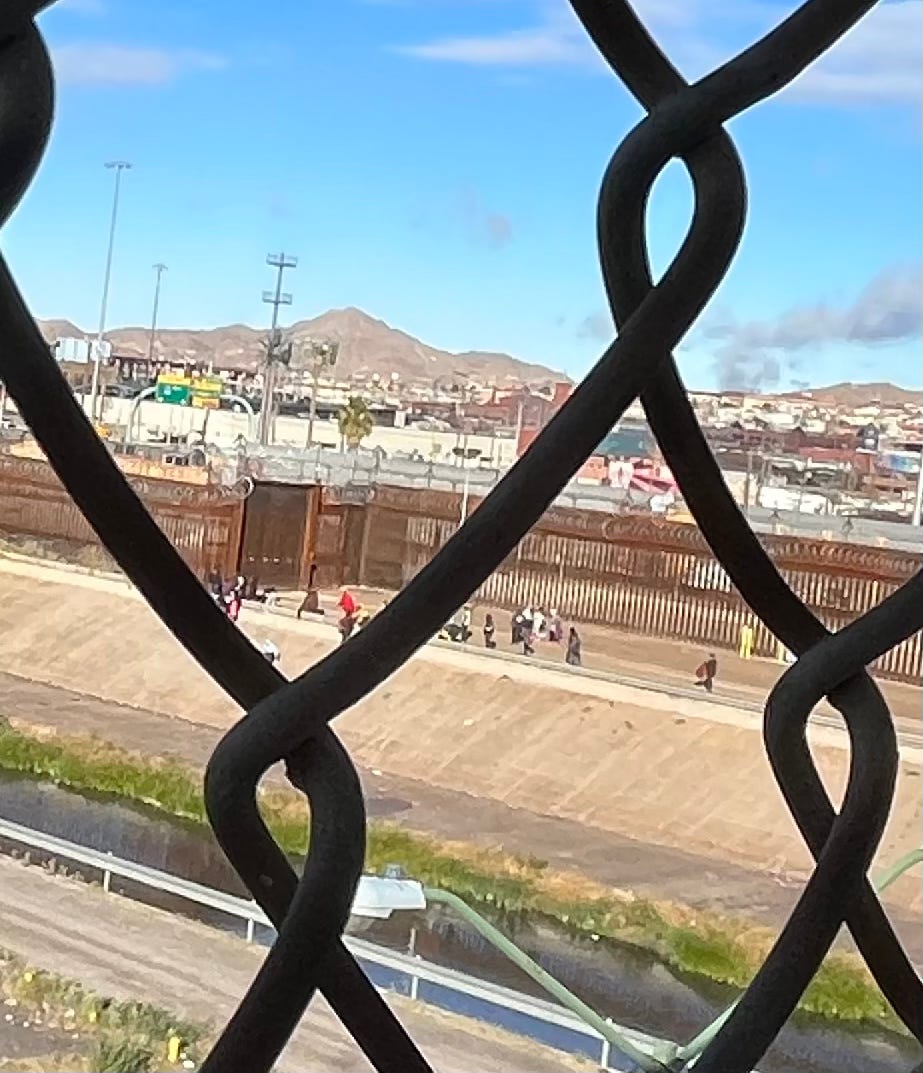











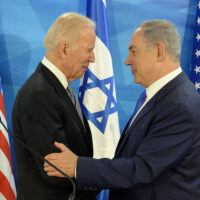











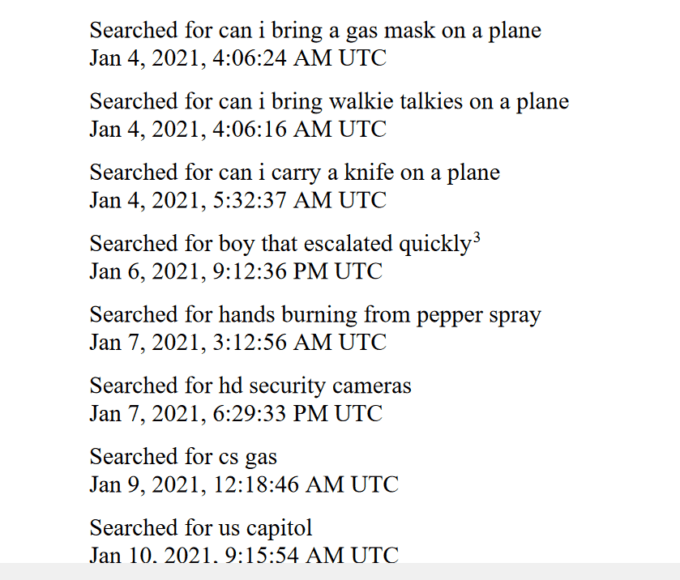

















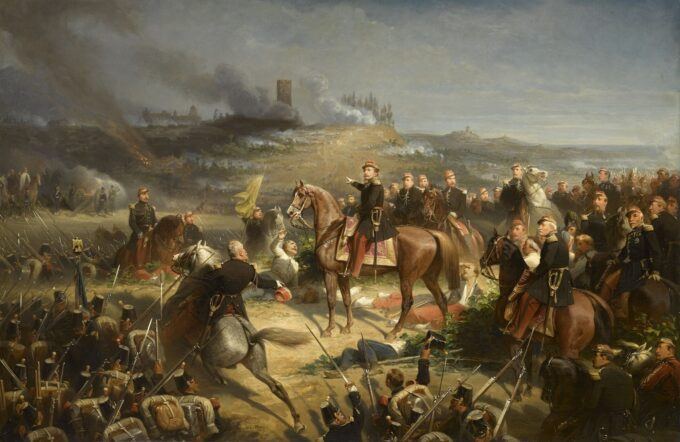





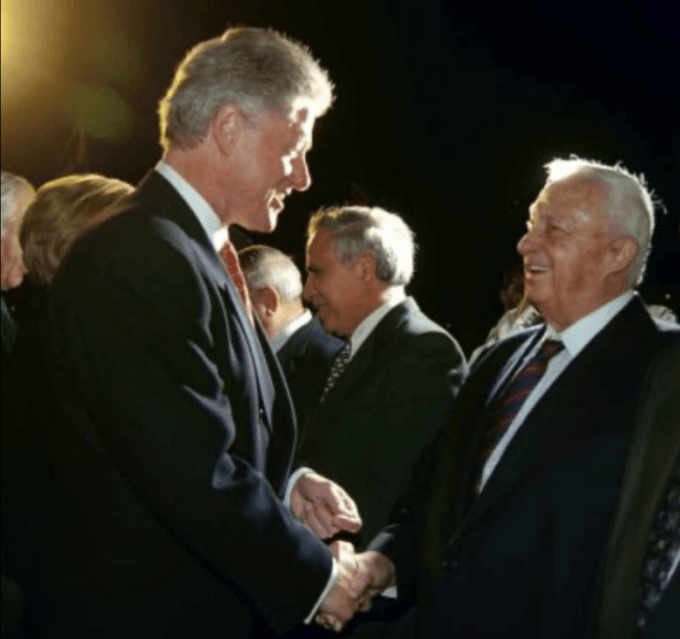





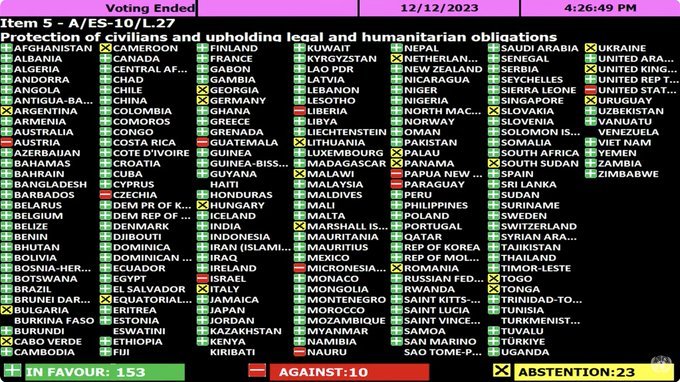







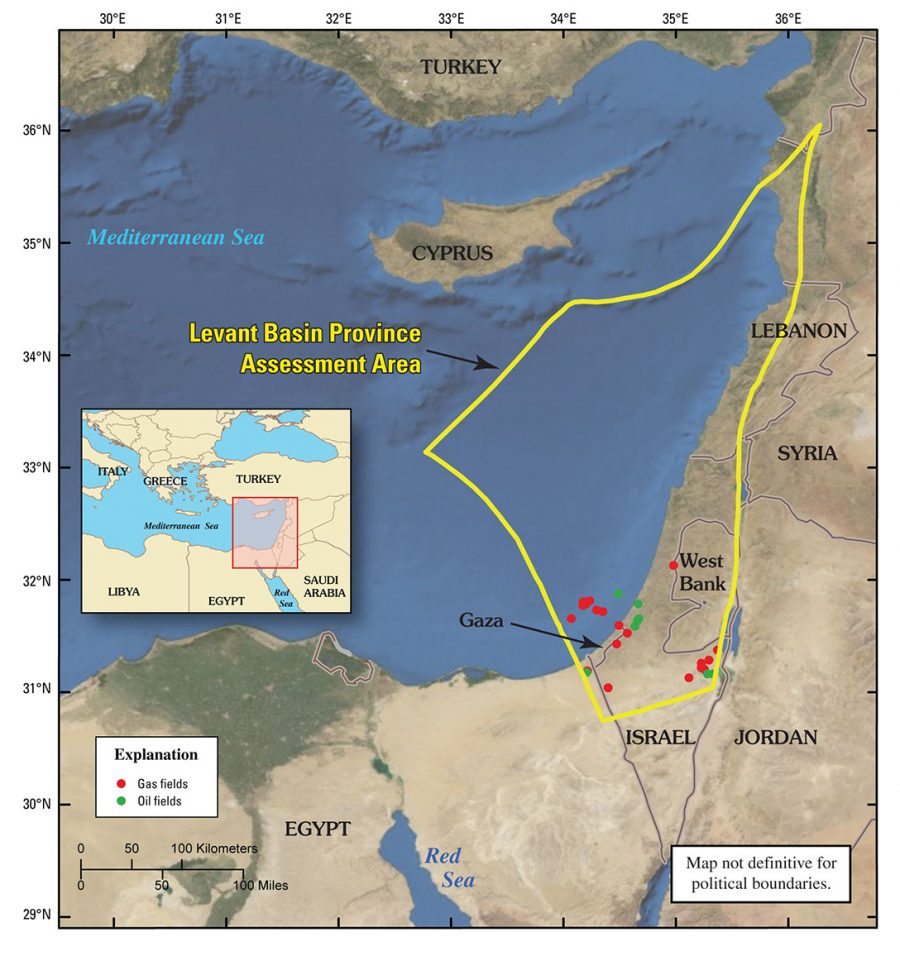




 lives and 250 hostages taken by Hamas during their Oct 7th attack, which precipitated what can only be termed as Israel’s ethnic cleansing campaign– well, these supporters of Palestinian human rights are quick to be branded by many including university authorities as anti-semites.
lives and 250 hostages taken by Hamas during their Oct 7th attack, which precipitated what can only be termed as Israel’s ethnic cleansing campaign– well, these supporters of Palestinian human rights are quick to be branded by many including university authorities as anti-semites.




